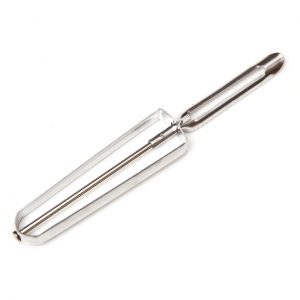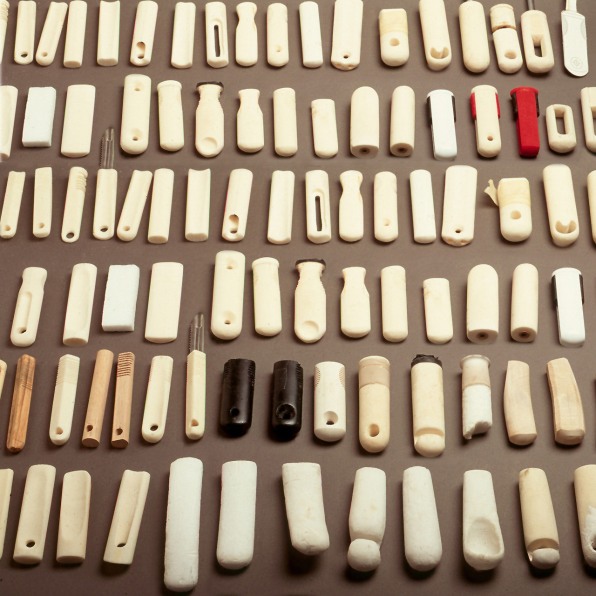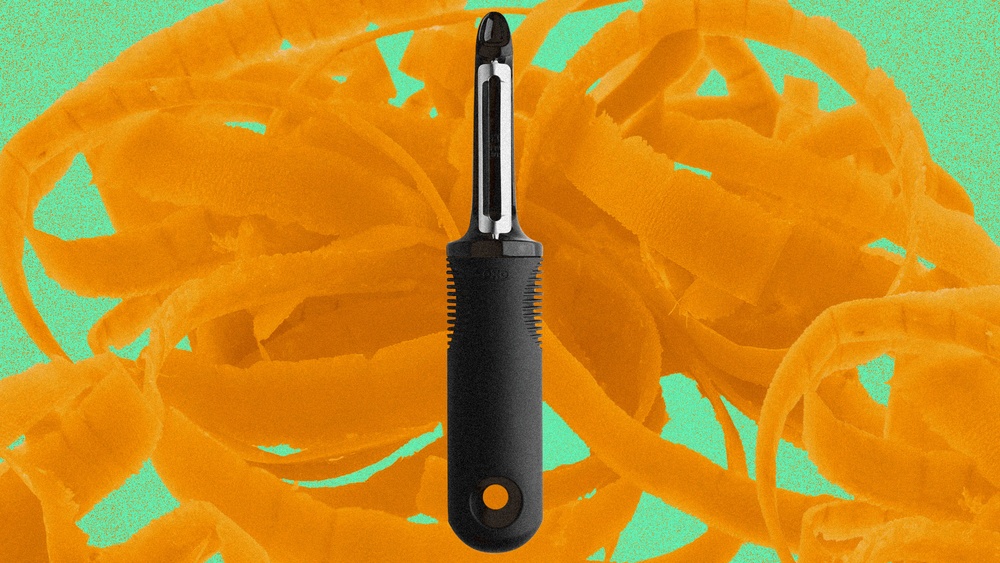Have you ever stopped to think about the simple tool you use every day to peel your vegetables? The humble vegetable peeler might seem ordinary, but it has a fascinating story of innovation and design behind it.
From early metal blades to the ergonomic gadgets in your kitchen drawer, the vegetable peeler has evolved to make your cooking easier, faster, and more comfortable. If you’ve ever struggled with a stubborn peel or felt wrist pain while prepping food, understanding this evolution will change the way you look at this kitchen essential—and might even inspire you to choose the perfect peeler for your needs.
Keep reading to discover how this small tool has transformed over time and why it matters for your cooking experience.
Origins Of The Vegetable Peeler
The vegetable peeler is a simple tool with a long history. It has made kitchen work easier by removing skins from fruits and vegetables quickly. The origins of this handy device trace back to early kitchen tools used centuries ago. Understanding these beginnings helps us appreciate the design and function of modern peelers.
Early Kitchen Tools
Before the vegetable peeler, people used knives to peel food. This method was slow and risky. Small knives and scrapers made of bone or metal helped in some cases. These tools required careful handling and skill to avoid waste and injury. Over time, cooks sought better ways to peel quickly and safely.
Invention Milestones
The first patent for a vegetable peeler came in the 19th century. A French man named Victor Pouchet designed a tool with a fixed blade. This invention made peeling faster and less dangerous. Later, in 1928, a Swiss man named Alfred Neweczerzal improved the design. He created the swivel blade peeler, which moved easily with the shape of vegetables. This design is still popular today.

Credit: www.fastcompany.com
Classic Peeler Designs
Classic peeler designs have shaped the way we prepare vegetables for centuries. These simple tools make peeling fast and easy. Their designs focus on comfort and efficiency. Two main styles stand out in kitchen history. Each offers unique benefits for different types of produce.
Straight Peelers
Straight peelers have a blade aligned with the handle. This design allows for precise control. The blade is fixed and sharp, perfect for peeling thin layers. It works well on firm vegetables like carrots and potatoes. The handle is usually straight and fits comfortably in hand. This peeler style is common in many kitchens worldwide. It offers a classic feel and reliable performance.
Y-shaped Peelers
Y-shaped peelers have a blade mounted perpendicular to the handle. This shape looks like the letter “Y.” The wide blade covers more surface area while peeling. It makes peeling round or large vegetables easier. The handle allows a firm grip with less wrist effort. This design suits potatoes, cucumbers, and similar produce. Many cooks prefer this style for quick peeling jobs.
Innovations In Peeler Technology
The vegetable peeler has seen many changes over the years. Innovations in peeler technology have made peeling faster, easier, and safer. New designs focus on comfort and versatility. These improvements help both home cooks and professionals handle different types of fruits and vegetables with ease.
Swivel And Serrated Blades
Swivel blades move to match the shape of the vegetable. This makes peeling smooth and reduces waste. The blade adjusts angle automatically, following curves and bumps.
Serrated blades have small teeth that grip slippery skins. They work well on soft or waxy fruits like tomatoes and kiwis. This design helps peel thin skins without crushing the fruit.
Julienne And Specialty Peelers
Julienne peelers create thin, uniform strips of vegetables. These strips are perfect for salads and garnishes. They offer a creative way to prepare carrots, zucchini, and more.
Specialty peelers target specific tasks. Some peelers remove potato eyes or peel tough-skinned squash. Others combine multiple functions in one tool. These peelers save time and reduce clutter in the kitchen.

Credit: www.fall-line.co.uk
Ergonomic Advances
Ergonomic advances have played a key role in the evolution of the vegetable peeler. Early peelers were often uncomfortable and caused hand strain. Modern designs focus on ease of use and comfort. These changes help people peel vegetables faster and with less effort. The improvements also allow users with limited hand strength to work comfortably.
Designs For Comfort
Vegetable peelers now come with shapes that fit the hand naturally. Handles are curved or padded to reduce pressure points. This reduces fatigue during peeling tasks. Some peelers have wider handles for a better grip. This design helps spread the force more evenly across the hand. Users can peel vegetables without cramping or discomfort.
Materials And Grip Improvements
New materials improve how peelers feel in the hand. Soft rubber or silicone grips prevent slipping. These materials also absorb some pressure from gripping tightly. The result is less strain on fingers and wrists. Non-slip surfaces give better control, even when hands are wet. This makes peeling safer and easier for everyone.
Impact Of Arthritis-friendly Designs
Arthritis-friendly designs have changed how vegetable peelers serve users with limited hand strength. These peelers reduce pain and make peeling easier. They focus on comfort, grip, and control to help people with arthritis enjoy cooking again.
The impact goes beyond just arthritis. These designs improve usability for everyone. They make the peeling process safer and less tiring. The evolution of such peelers shows how thoughtful design meets real needs.
The Oxo Good Grips Story
OXO Good Grips began with a simple problem. Betsey Farber had arthritis and found traditional peelers painful to use. Her husband, Sam Farber, saw her struggle and wanted a better tool. They created a peeler with a large, soft handle that was easy to hold. This design gave a firm grip without pressure. The peeler’s blade was sharp but safe to control. This approach changed kitchen tools forever.
User-centered Product Development
Designers now focus on user needs first. They study how people with arthritis handle tools. They test materials that reduce strain and slipping. Handles are made thicker and softer to improve comfort. Blades are designed to glide smoothly without extra force. Feedback from users shapes every detail. This process ensures the product truly helps those with hand difficulties. The result is a peeler that feels natural and effortless to use.
Peeler Types And Their Uses
The vegetable peeler has evolved into many types, each made for specific tasks. Choosing the right peeler can make peeling faster and easier. Different peelers suit different shapes and textures of produce. Understanding the uses of each type helps in kitchen work.
Potato Vs. Vegetable Peelers
Potato peelers are a kind of vegetable peeler designed for potatoes. They often include a tool to remove potato eyes. Vegetable peelers cover a wider range of produce. Not all vegetable peelers work well on potatoes. For example, a Y-peeler is great for round items like potatoes. Some vegetable peelers are better for long or oddly shaped vegetables.
Choosing The Right Peeler For Produce
Swivel peelers have a blade that moves to follow the shape of the vegetable. This makes them good for many types of produce. Y-peelers have a fixed blade and work well on larger, round vegetables. Straight peelers have a simple fixed blade, useful for straight or firm vegetables. Julienne peelers cut vegetables into thin strips, perfect for salads and garnishes. Serrated peelers grip soft-skinned fruits and vegetables for easy peeling.
Select a peeler based on the vegetable’s size, shape, and skin texture. Using the right peeler saves time and reduces waste. Each peeler type offers unique benefits for cooking and food preparation.
Modern High-tech Peelers
Modern high-tech peelers bring innovation to everyday kitchen tasks. These tools combine technology and design to make peeling faster and easier. They suit busy kitchens and those who value convenience. From electric models to smart gadgets, technology enhances peeling precision and comfort.
Electric And Automated Peelers
Electric peelers use motors to spin vegetables against a blade. This reduces effort and speeds up peeling. Automated peelers work well for potatoes, carrots, and apples. They can peel multiple items in minutes without tiring the user. Some models include safety features to prevent accidents. These peelers suit people with limited hand strength.
Smart Kitchen Gadgets
Smart peelers connect to apps or use sensors to improve performance. They adjust speed and pressure depending on the vegetable type. Some smart peelers offer tutorials or tips via mobile apps. They help users peel efficiently and reduce food waste. Smart peelers represent the blend of technology and cooking skills. These gadgets aim to make kitchen tasks smoother and more enjoyable.
Future Trends In Peeler Design
The future of vegetable peeler design points toward smarter, greener, and more user-friendly tools. Designers focus on improving both the materials and the overall experience. The goal is to meet the needs of modern kitchens and eco-conscious consumers. New trends promise peelers that are easier to use, last longer, and reduce environmental impact.
Sustainability And Eco-friendly Materials
More peelers will use sustainable materials like bamboo and recycled plastics. These materials lower the carbon footprint compared to traditional metals and plastics. Compostable handles and biodegradable packaging are also becoming common. Companies aim to reduce waste and pollution during production. This makes peelers better for the environment and safer for users.
Innovative Shapes And Functions
Future peelers will feature new shapes to enhance grip and comfort. Ergonomic designs reduce hand strain and improve control. Some peelers will combine functions, such as peeling, slicing, and julienning, in one tool. Magnetic or detachable blades will make cleaning easier. Innovations will focus on making peelers adaptable for different vegetables and user needs.

Credit: en.wikipedia.org
Frequently Asked Questions
What Is The History Of The Vegetable Peeler?
The vegetable peeler originated in the 19th century. Swiss inventors improved its design for efficiency. The Y-shaped peeler became popular for ease and speed. In the 20th century, ergonomic handles enhanced comfort, aiding users with arthritis. Today, peelers come in various styles for different produce.
Why Was The Potato Peeler Redesigned?
The potato peeler was redesigned to ease use for people with arthritis, improving comfort and efficiency. The new design offers better grip and reduces hand strain.
How Many Types Of Peelers Are There?
There are four main types of peelers: swivel, Y-peeler, straight, and serrated. Each suits different produce and peeling styles.
What Is The Difference Between A Potato Peeler And A Vegetable Peeler?
A potato peeler is a vegetable peeler designed specifically for potatoes, often with an eye remover. Vegetable peelers work on various produce types. Y-peelers suit round items like potatoes, while swivel peelers handle diverse shapes and textures efficiently.
Conclusion
The vegetable peeler has come a long way over time. Designs improved to make peeling easier and safer. Different types now serve many kitchen needs. From simple metal peelers to ergonomic grips, each step helped cooks save time. Understanding this evolution shows how small tools impact daily life.
The peeler remains a simple yet important kitchen gadget. Its story reminds us that even basic tools can evolve thoughtfully.

